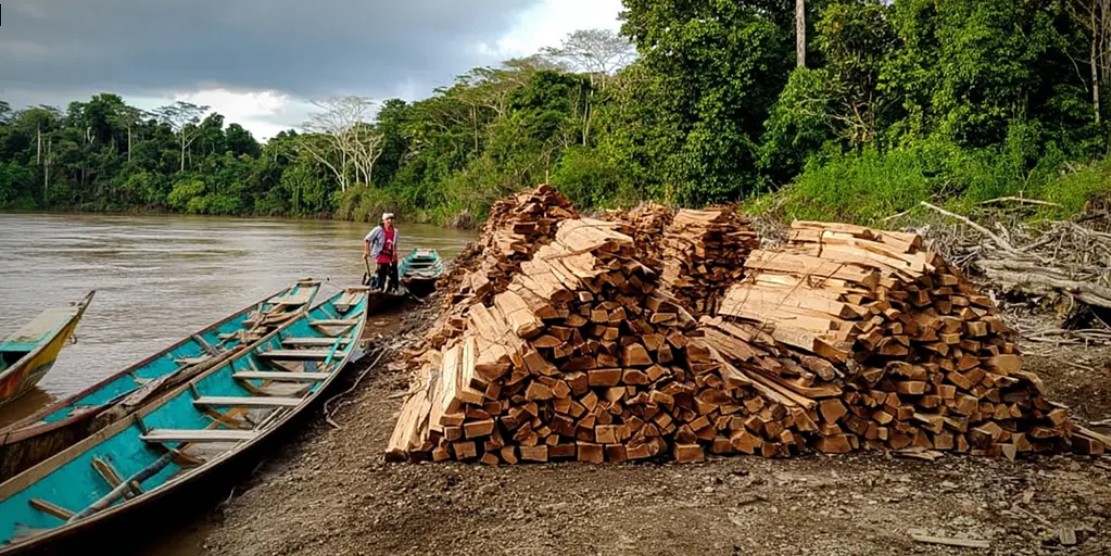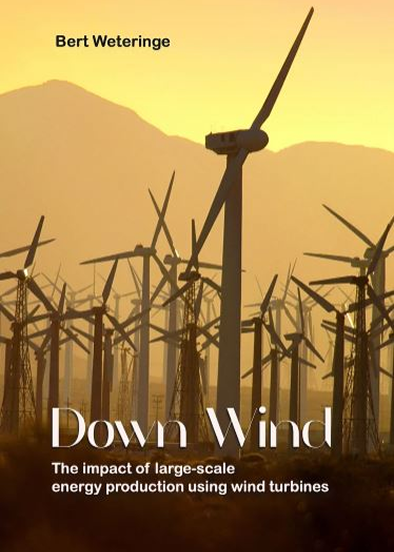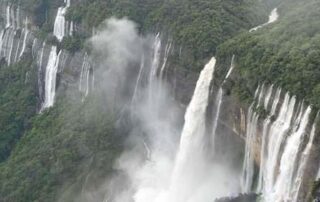Shock COP Dirty Secret: At Least Half the Balsa Wood in Wind Turbine Blades is Illegally Logged in Amazonian Rainforests
In his latest piece, journalist Chris Morrison exposes how more than half of the balsa wood used in wind turbine blades is being illegally logged in Amazonian rainforests, calling into question the ecological credentials of green energy expansion.
Protecting the Amazon rainforest is one of the main goals of COP30, with the location in the Brazilian city of Belém chosen to emphasise what is described as the crucial role that such forests play in global climate regulation, biodiversity and “carbon” storage. It is bad enough that 100,000 mature rainforest trees had to be cut down to build a ‘Highway of Shame’ to speed COP delegates around town this week and next. But a far greater scandal, which today the Daily Sceptic brings to wider public attention, is the illegal logging of balsa wood in the Ecuadorian rainforest to supply rocketing demand from mostly Chinese wind turbine manufacturers. Such is the need for the strong but extraordinarily lightweight wood, it is estimated that at least 50% of the world’s balsa demand is currently being supplied by illegal logging in virgin rainforest.
The wood’s unique qualities make it ideal as a core for the giant blades attached to wind turbines. Ecuador produces over 90% of balsa due to unique climatic conditions in this particular area of the Americas. Much of it was previously obtained from plantations, but a ‘balsa boom’ over the last five years has depleted these resources and shortages have been made good by plundering the rainforest. And plunder is hardly an exaggeration, with trees apparently being removed from some of the most protected areas of the Ecuadorian forest.
Last year, the Environmental Investigation Agency produced a damning report that found many producers blended plantation wood with illegally harvested wild balsa from Amazon forests, including the Yasuni Biosphere Reserve, home to uncontacted indigenous groups. Its key finding is reprinted below:
According to EIA’s investigation this skyrocketing demand has had a long lasting effect. It appears that since the 2019–2020 balsa boom, the entire balsa production sector continues to depend upon the logging of natural forests, with a blending of plantation vs natural forest that allegedly varies between10% and 70% depending on exporter. These mixing practices in Ecuador have global repercussions.
Curiously, this shocking report, that seriously undermines the ethical production chain of wind turbines, failed to get a mention in the mainstream media. The EIA is not a small unknown operation, rather it is a substantial well-funded NGO founded in 1984 in the UK, with offices in the US and Europe. The Net Zero fantasy requires the planet to be blanketed with wind turbines, and this obviously overrules any ecological concerns. Bats and birds can be killed in their millions, whales beached on shorelines and entire local ecosystems disrupted, but the political activists don’t seem to care. If anything is said, it is little more than justifying and accepting the ecological consequences for the greater Net Zero good. For instance, in the UK the Bat Conservation Trust states that “climate change” is a significant threat to bat populations. “We need renewable energy to help mitigate for climate change for the benefit of the bats, people and the wider environment,” it adds.
Until recently, balsa wood was a small market, its uses including model aircraft and surfboards. The balsa boom led by wind blade demand means the current market is estimated at an annual value of at least $200 million. The balsa tree (Ochroma pyramidale) is fast growing in the right tropical conditions. If it wasn’t for the enormous demand created by the wind industry, it could be harvested on plantations as a sustainable commodity. As it is, recent and continuing demand has exhausted many plantations and denuded areas of virgin rainforest. In a wild setting, balsa trees often fill in natural gaps. Harvesting them creates sudden clear spaces that disturb the complex webs of life that support thousands of animal and plant species. Although fast growing in rich soils, regeneration in the rainforest can be much slower due to poor quality ground and local erosion caused by canopy removal.
To this day, balsa wood has numerous advantages as a core wind blade material over possible plastic foam substitutes. It has superior strength and stiffness compared to foam materials, and this allows for thinner core layers in high load areas like a blade’s root. This helps overall weight to be reduced without any reduction in overall engineering integrity. Prices of balsa wood are generally considered competitive, not least it would seem because production of plantation timber is massively boosted by the illegal logging.
The EIA report is worth reading in full. Mainstream media might even consider reporting its findings. The EIA investigators toured many of the illegal logging sites and charged that most, if not all, exporters quickly turned to natural forests as a “convenient and immediate available replacement” when plantations were quickly depleted of older trees from around the turn of the decade. It was found that balsa was extracted from Ecuador’s Amazonian heartland, “much of it spanning some of the last intact forest landscapes in the country”. These were said to be unique protected areas and emblematic indigenous territories. Traders are said to have told EIA that the logging of balsa was taking place “from north to south across most of the Amazonian provinces of the country”.
The EIA recommended that wind blade manufactures and wind power developers suspend the use of balsa until Ecuadorian supply chains are traced and transparent. The answer to that, as Britain’s unhinged energy secretary Ed Miliband once sang, is blowing in the wind.

Chris Morrison
Chris Morrison is former financial journalist and publisher. He is Environment Editor of the Daily Sceptic, where this article was published on 10 November 2025. Follow Chris on X.
more news
Book Review – Politics & Climate Change: A History
Andy May’s 2020 book, Politics & Climate Change: A History, is picking up renewed attention — and for good reason. Dr. Patrice Poyet has released a freshly updated, in-depth review that’s now available on ResearchGate.
Michelle Stirling: CBC brings Soviet-style propaganda to Canada
CBC is reporting on a new study by Pruysers et al. (2025) that claims people sceptical of climate change have personality issues associated with the “Dark Triad:” narcissism, Machiavellianism, and psychopathy. In contrast, they say those who agree with catastrophic human-caused climate change narratives exhibit prosocial traits like agreeableness and honesty-humility.
Public Interest in Climate Change Wanes says Friends of Science Society
Recent polls indicate that climate change action is no longer a priority for most North Americans, says Friends of Science Society. This runs counter to the 89% climate action advocacy media project of Covering Climate Now and counter to claims of Canada’s Abacus Data of a spike in climate interest by the public.






